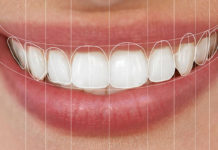Bonding and product chemistry. Let’s see, would this equate to Dentistry 101? That’s what I expected from a recent visit to Ivoclar Vivadent’s USA headquarters in Amherst, New York. Instead, for me and some of my fellow colleagues, the experience became a reality check.
While touring Ivoclar’s phenomenal facility, we received several product lectures and demonstrations. My son, a third-year dental student, also attended. While our initial intent was to get the latest information on dental products, we came away with an unexpected awakening. The visit put the quality of dentistry that I—and many other dentists—practice each day in question.
A number of topics were covered pertaining to materials and their application. Ivoclar has introduced to dentistry an all-ceramic material that redefines the standard of choice in cosmetic dentistry. This lithium disilicate material has very high strength and durability, yet maintains superb esthetics. Whether it is Ivoclar’s IPS e.max Press or IPS e.max CAD, lithium disilicate demonstrates wear compatibility and sustained biocompatibility.
The monolithic design of the material has shown far more strength and durability than layered crowns with a zirconia core.As we toured the facility, specialists demonstrated motion fatigue tests where IPS e.max lithium disilicate outperformed the layered ceramic zirconia crowns in terms of failure load and cycles and were much less likely to chip or fracture.
As with other restorative materials, lithium disilicate restorations require ideal preparation design. Physical stability and intimate bonding of the ceramic to the prep depend on proper occlusal reduction and shoulder margins that maintain smooth, rounded line angles. This is imperative.
The internal surface of the restoration must be chemically etched with hydrofluoric acid for 20 seconds, then silanated. When internal surface preparation is done, it must not be overly treated, as this can weaken the bond.
The experience that impressed me the most was the subject of bonding chemistry. I graduated from dental school in 1979 when bonding and composites were in their infancy. PFM crowns had become the standard for tooth reconstruction.
Over the past thirty years, products have changed dramatically. The composite matrix and bonding chemistries have filled the gaps in stability, function, and esthetics.This has occurred in tandem with equally amazing advances in ceramic restorative materials. In my practice, the dentistry that I do most often and find most rewarding involves using composites or ceramic restorations.In other words, I heavily rely on bonding chemistry.
The greatest wisdom gained from my day with Ivoclar was the importance of proper application in chemistry. Successful bonding starts at the very beginning of tooth preparation, and it’s just as critical in the final moments of delivery to the mouth. When the chemical application of any product is not followed to the letter, the end result most often is limited, with questionable success.
Dentists see failures in the form of crowns debonding or suffering ceramic fractures. My practice is not confronted with substantial crown fracture or bonding failures, but Ivoclar educated us on how to predictably improve daily results by simply following fundamental principles.
How often do dentists get new products, jump into using them, and apply them on patients without reading MSDS data sheets or instructions? Maybe we even ask the sales representative for a quick show-tell-do lesson. Big mistake!
Conventional cementation requires a retentive preparation and a tight fit, which is not as critical for adhesive cementation. It’s also less restrictive about which materials can be used. With regard to all-ceramic restorations, a bonded restoration is much stronger than a conventionally cemented one.
In general, bonding cements are more tenacious than conventional cements. The objective of bonding cementation is to create a retentive restoration, seal the margins, reinforce all-ceramic restorations and maintain esthetics. Adhesive cements are more dynamic than self-adhesive cements. Bond strength and fracture toughness is higher for all-ceramic restorations when bonded. While more steps may be involved in applying adhesive cements, the long-term results are improved.
Bondingis more critical and technique-sensitive than dentists may realize.It affects retention performance and long-term esthetics. It can also increase the time needed for clean-up at the placement site. Still, when done properly, bonding can actually be much easier to clean up.
A dry, clean area around the tooth prep is imperative before applying the bonding primer. Before cementation of all restorations, interior surfaces must be silanated. Note the interior, not the exterior, of the restoration.If these precautions have not been taken during placement of the silane, then the excess is distributed in non-bonding areas.As a result, any excess cement or flash around the margins will be difficult to remove.
Sometimes the complaint from practitioners is that the bonding material is too difficult to clean up and remove. “It sticks to everything around it” is a common phrase.
Is this more an indication of the method of placement or product? The material is obviously effective; perhaps those who apply the material are placing it in excess or using the air too aggressively. One must take particular care when blowing air over the tooth and restoration, keeping in mind the ease with which material can spread onto non-bonding areas.
Confusion seems to permeate our profession with regard to bonding. In fact, one of the dentists at our meeting echoed that feeling in describing his frustration: “Technology is moving faster, and it becomes difficult for dentists and ultimately their staff to keep up with the changes.”
The number of new materials and products introduced increases dramatically from year to year. The competitive market is what nurtures this research and development. For those of us in my generation, we can attest to the superiority of new products from those we used in the past. Thus, quality companies constantly strive to improve and maintain new products, which help dental professionals stay on the cutting edge of performance.
This can be a two-edged sword.The end result definitely is a benefit, especially for the patient, but it also fuels the need for clinicians to understand these new materials and their parameters of use and function.
As my son and I were driving home from Ivoclar, he expressed that dentistry appeared to be in a constant state of flux due to the advancements occurring daily. He now understood that his future degree would merely be a license to pursue more education by virtue of the constant changes. What he concluded was that in order to provide the best quality of care, a dentist needs to stay tuned to materials and their application.
Based on the knowledge I gained this day, I have begun torethink how I use and apply materials to bond and cement restorations. While I currently use multiple brands, I have started to ask myself: Even when the results are satisfactory mixing brands, are they the ultimate results?
The multiple products in our office have created a lack of continuity. They may at times slow up the process. So I decided to streamline the inventory and rely on what I perceive as a better approach. We do this everyday in our lives in many different ways by delegating to those around us. We ask others to decide, perform tasks, or in this case, rely on a business that produces materials based on compatibility and long-term success.
Ivoclar has proven to be the right company to entrust with this task, just as Arrowhead is my principal laboratory of choice. In other words, I have entrusted them to provide the most optimal product from evidence-based science, which benefits my patients. They, as successful companies, are invested in knowledge and product. I find it only rational to find those companies, trust in them, and collectively manage the partnership of materials for clinical care.
The chemistry involved in dentistry is becoming exponentially more complex. For my practice, I have decided to streamline operations. We work with products proven to be chemically compatible, lessening the complexity for me andmy staff.These are words to bond by.









